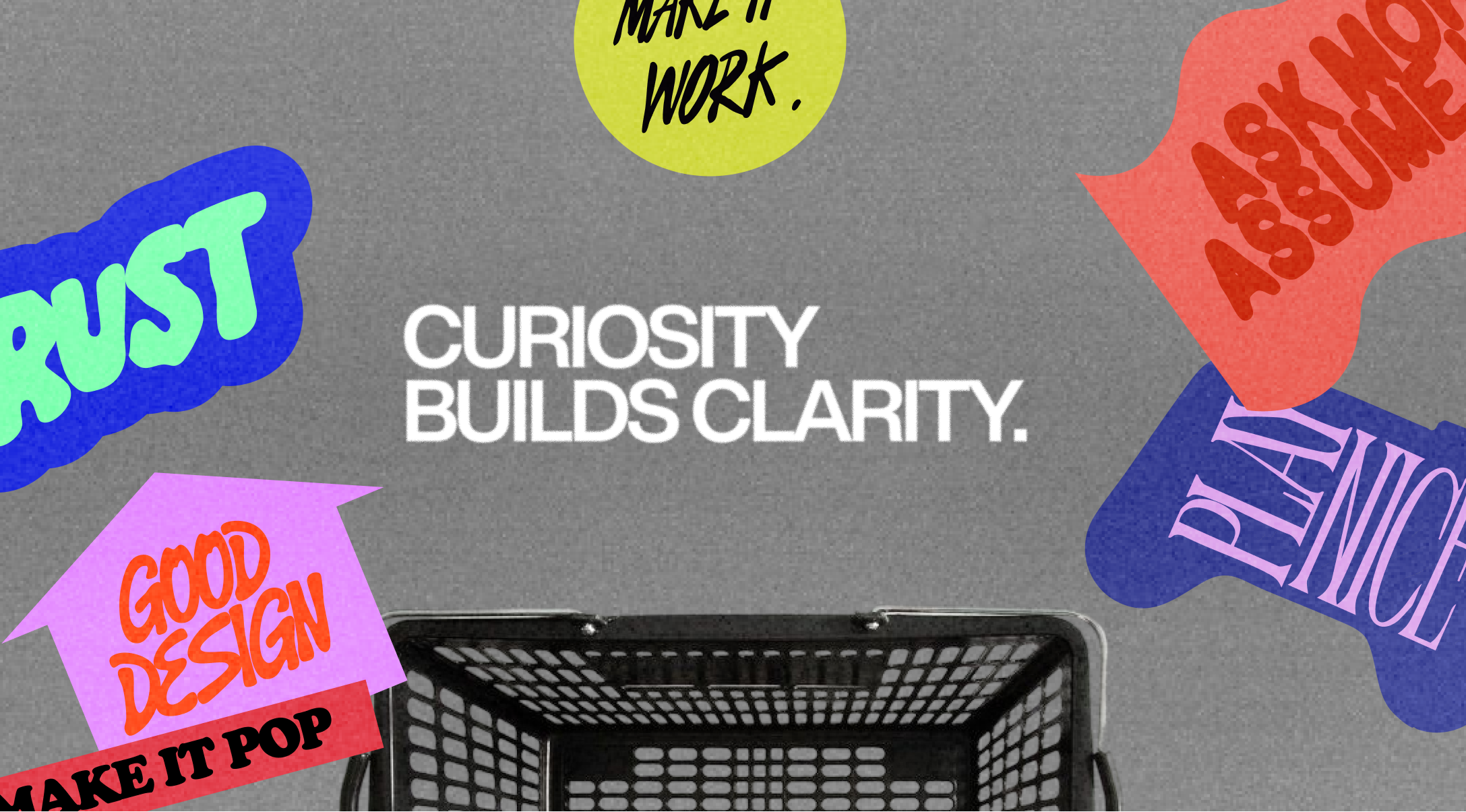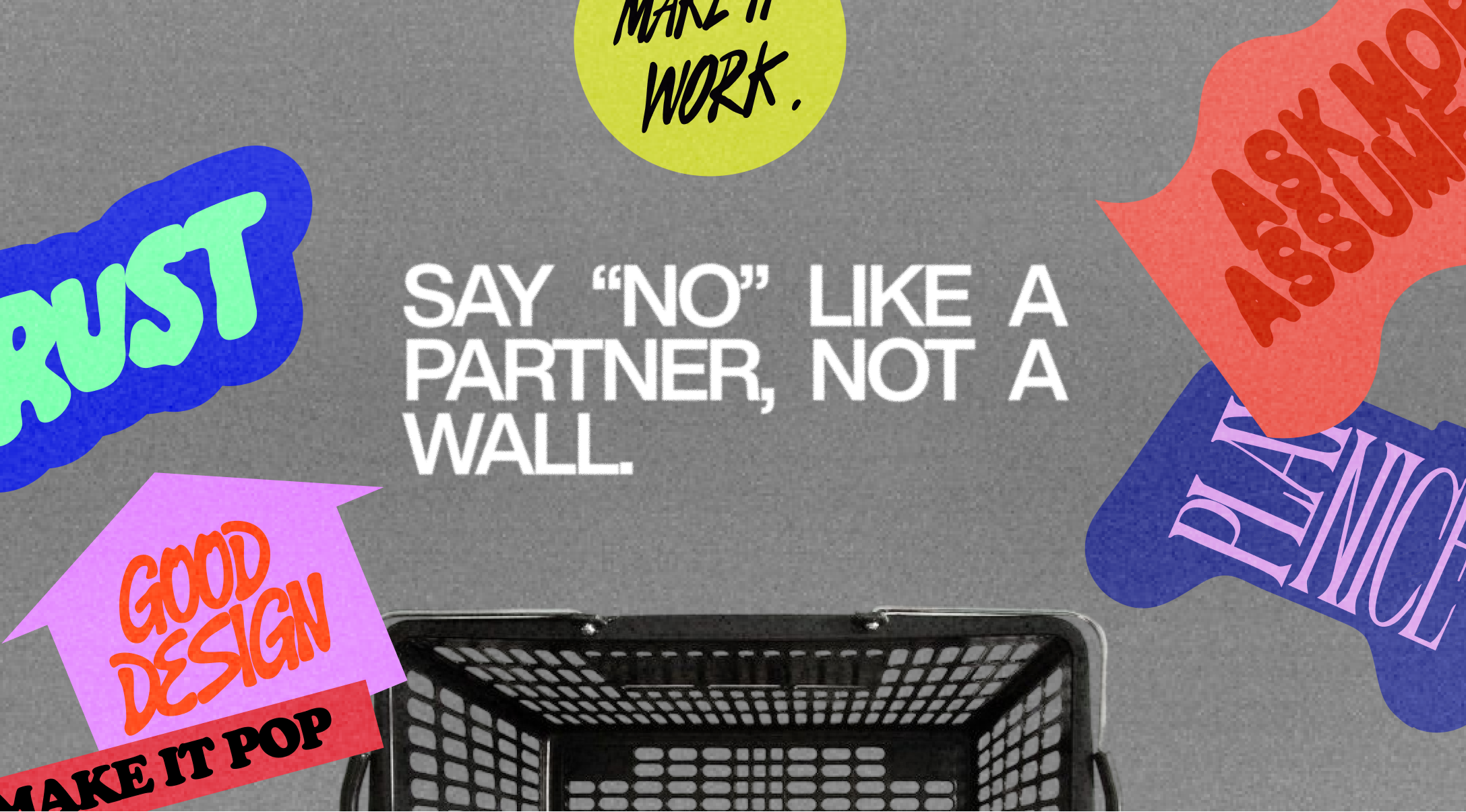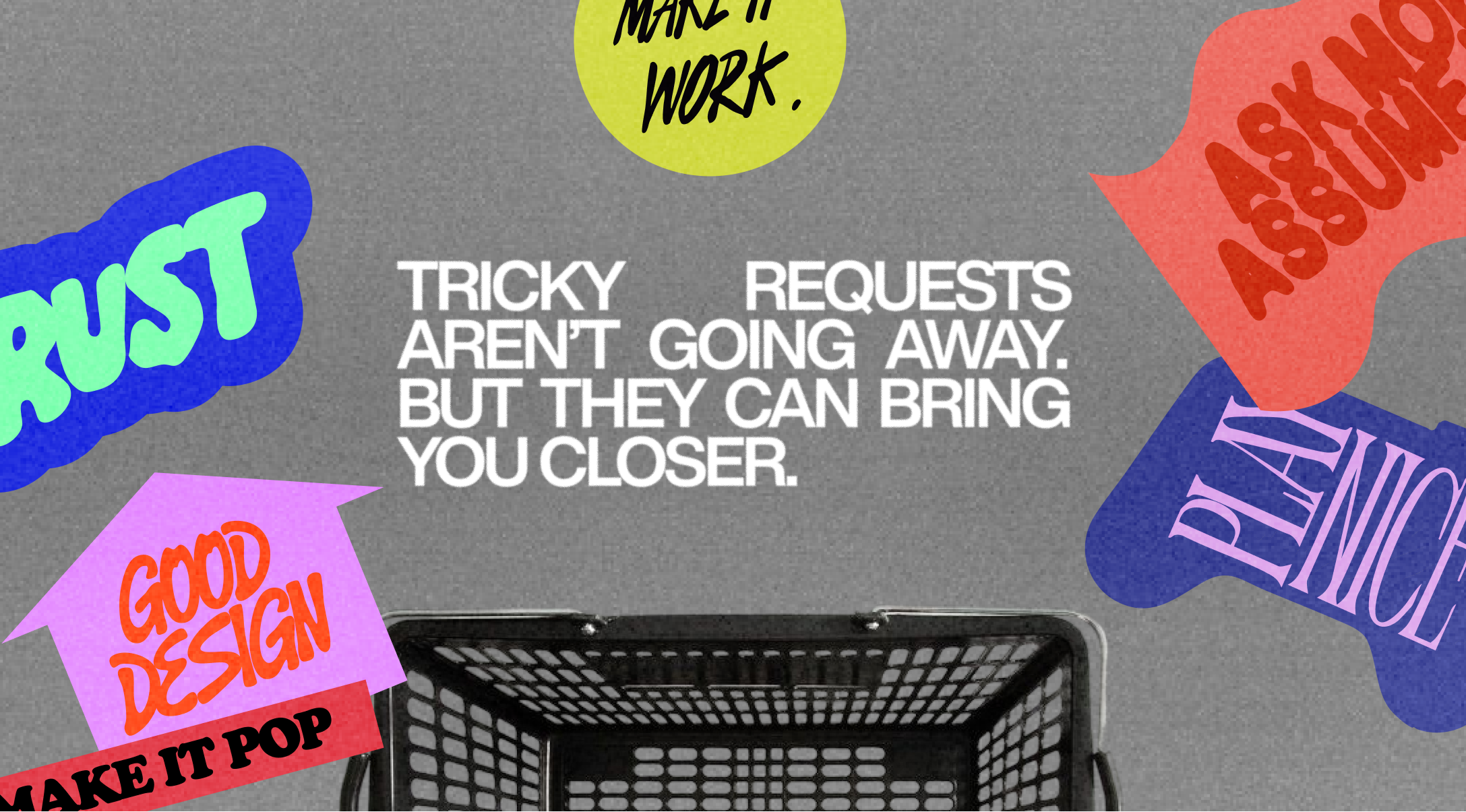

If you’ve been in design long enough, you know the moment: a client asks for something that sounds impossible. Maybe they want a logo “that looks modern but timeless.” Or they ask for a website “simple but unique.” Sometimes the request is vague, sometimes contradictory, sometimes just unrealistic given time or budget.
We’ve been there too, many times. And instead of rolling our eyes, we’ve learned to see these moments as opportunities to build trust and show what partnership really means.

Most tricky requests aren’t about the thing itself. They’re signals. A client might ask for “make it pop” when what they really mean is “I’m afraid this design won’t stand out.” Or they’ll ask for ten logos because they’re not confident about their own vision yet.
If you only hear the words, you’ll get frustrated. If you hear the fear or desire behind them, you’ll design better—and the client will feel heard.

The best tool we’ve found is curiosity. When a request feels off, we don’t push back right away. We ask:
Nine times out of ten, the client refines their own thought in the process. Suddenly what felt like a contradiction becomes a clear direction.

Our job isn’t just to design—it’s to translate. If a client says “make it luxurious”, we break that down into fonts, color palettes, textures, and layouts that communicate luxury. If they want “more friendly”, we map that to softer typography, brighter tones, approachable copy.
Vagueness isn’t the enemy. It’s raw material that we shape into clarity.
Of course, sometimes the request really is unworkable. Maybe the timeline is too short, or the expectation is unrealistic. In those cases, we’ve learned to push back without killing the relationship.
We say things like: “I hear what you want, and here’s what we can realistically achieve within this scope. If you’d like more, here are the trade-offs.”
That way, the client sees we’re not rejecting their idea—we’re guiding them toward a solution that works.

A tricky request can feel like a roadblock in the moment. But if you zoom out, it’s usually just part of a bigger journey. Clients don’t want a hundred logos or endless tweaks; they want to feel confident in their brand. Every request, no matter how strange, comes from that core need.
When we remember that, we stop taking the requests personally and start using them as a way to strengthen the partnership.

Tricky client requests aren’t going away. If anything, they’re part of the creative process. What matters is how you respond: with curiosity instead of frustration, empathy instead of defensiveness, guidance instead of silence.
Because at the end of the day, good design isn’t just about pixels or layouts. It’s about relationships. And the clients who trust us through the tricky parts are the ones who stay with us for the long run.